
Rotterdam is the second-largest city in the Netherlands after the national capital of Amsterdam. It is in the province of South Holland, part of the North Sea mouth of the Rhine–Meuse–Scheldt delta, via the "New Meuse" inland shipping channel, dug to connect to the Meuse at first and now to the Rhine.

The Royal Concertgebouw is a concert hall in Amsterdam, Netherlands. The Dutch term "concertgebouw" translates into English as "concert building". Its superb acoustics place it among the finest concert halls in the world, along with Boston's Symphony Hall and the Musikverein in Vienna.
The Rotterdam Philharmonic Orchestra is a Dutch symphony orchestra based in Rotterdam. Its primary venue is the concert hall De Doelen. The RPhO is considered one of the Netherlands' two principal orchestras of international standing, second to the Royal Concertgebouw Orchestra of Amsterdam. In addition to symphony concerts, the RPhO performs as the opera orchestra in productions at De Nederlandse Opera, as do other Dutch ensembles.

Stadion Feijenoord, more commonly known by its nickname De Kuip, is a stadium in Rotterdam, Netherlands. It was completed in 1937. The name is derived from the Feijenoord district in Rotterdam, and from the club with the same name.

The Sparta Stadion, nicknamed Het Kasteel, is a football stadium in Rotterdam, Netherlands. It is the home ground of Sparta Rotterdam. It has a capacity of 11,026.

Rotterdam Ahoy is a multi-purpose complex with a convention centre and an indoor arena located in Rotterdam, Netherlands. Opened originally in 1950, the current complex consists of three main venues: a fairs and events hall, a congress and conference centre, and the main venue the Ahoy Arena. The latter opened on 15 January 1971 and is the largest multi-purpose venue in the Netherlands, with a capacity of 16,426 as of May 2019.
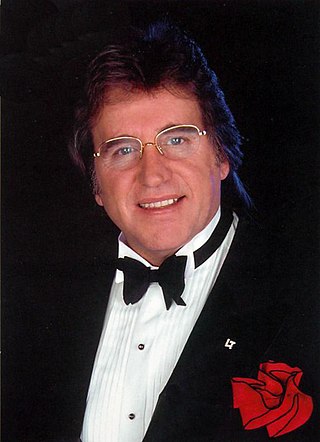
Leendert "Leen" Huijzer, better known by his stage name Lee Towers, is a Dutch singer with international success. He remains one of the best-selling Dutch artists and holds the record for the most concerts performed by a single artist at the Rotterdam Ahoy, making him one of the most successful Dutch artists of all time.
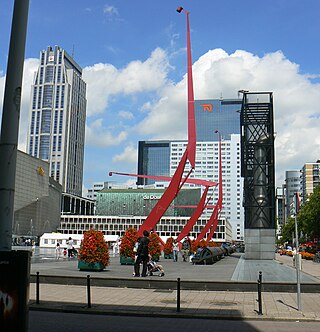
Theatre Square is a plaza situated in the heart of the city of Rotterdam, and is flanked by the municipal theatre, concert hall, restaurants, and cafes.

The Witte Huis or White House is a building and National Heritage Site in Rotterdam, Netherlands, built in 1898 in the Art Nouveau style. The building is 43 m (141 ft) tall, with 10 floors. It was the first hoogbouw in Europe. The building is listed as a Rijksmonument.

The former Van Nelle Factory on the Schie in Rotterdam, is considered a prime example of the modernist and functionalist architecture. It has been a designated UNESCO World Heritage Site since 2014. Soon after it was built, prominent architects described the factory as "the most beautiful spectacle of the modern age" and "a poem in steel and glass".

Music venues in the Netherlands are a vivid part of the social cultural environment of the country.

Cool is a neighborhood of Rotterdam, Netherlands in the Centrum borough. It is enclosed by the Weena in the north, the Mauritsweg and Eendrachtsweg in the west, Vasteland in the south and the Coolsingel and Schiedamse Vest in the east.

Baroeg is a music venue in Rotterdam. Baroeg self-describes itself as a 'subcultural pop venue' and hosts alternative modern music events and concerts. The club has been located in the Rotterdam neighbourhood Lombardijen, in the Spinozapark on the Spinozaweg.
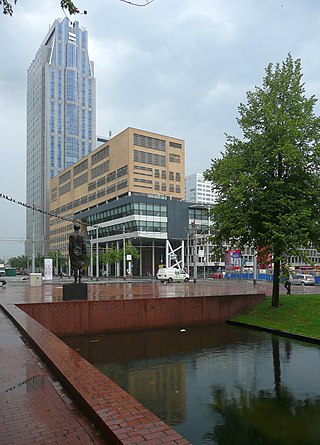
Codarts University for the Arts is a Dutch vocational university in Rotterdam that teaches music, dance and circus. It was established in its present location in 2000.

The Rotterdam tramway network is a key element of the overall public transport arrangements in Rotterdam, Netherlands.
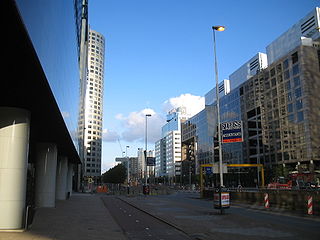
Weena is a street with many highrises in the center of Rotterdam, Netherlands. It defines the Rotterdam skyline. The street of about 1 kilometer length leads east-west from Hofplein to Beukelsdijk.
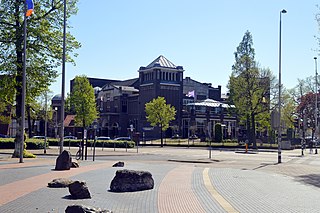
Concertgebouw de Vereeniging is a concert hall located in Nijmegen, Netherlands. The facility officially opened in 1915 and is built in a mixture of Art Nouveau and Art Deco styles. It has a capacity of 1,450 seats, and is renowned for its outstanding acoustics for orchestral music.
The following is a timeline of the history of the municipality of Rotterdam, Netherlands.
Crooswijk General Cemetery is a cemetery in Rotterdam, the Netherlands.

The Destroyed City is a bronze memorial sculpture in the Dutch city of Rotterdam. It commemorates the German bombing of Rotterdam on 14 May 1940, which destroyed the medieval centre of the city. Unveiled in 1953, it was designated as a Dutch national monument (Rijksmonument) in 2010. It is the largest sculpture by the Russian-born French sculptor Ossip Zadkine, his best known work, and the best known sculpture in Rotterdam.


















